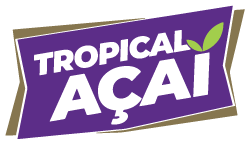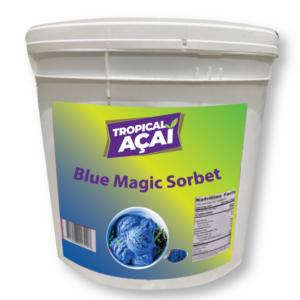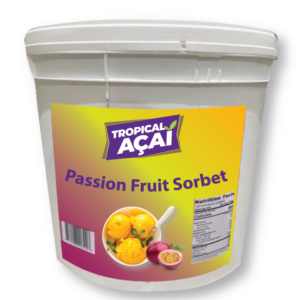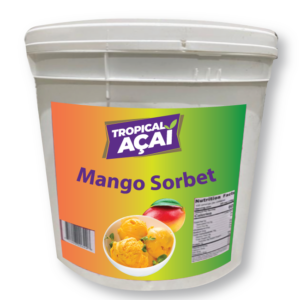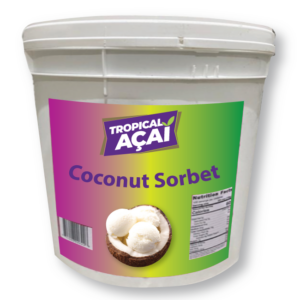Superfoods are taking the market by storm. Acai and pitaya offer a golden opportunity for your business. These vibrant, nutrient-packed fruits can help you create amazing products that promote health and wellness.
This guide will help you create successful acai and pitaya-based products. You’ll learn how to use premium offerings from suppliers like Tropical Acai to meet growing consumer demand.
We’ll cover market trends, production processes, and strategies for the superfood industry. Get ready to dive into a world of flavor, nutrition, and business success!
Key Takeaways
- Explore the market potential of acai and pitaya-based products
- Learn essential production techniques for high-quality acai items
- Discover strategies for sourcing premium organic acai ingredients
- Understand how to develop unique product formulations
- Gain insights into effective marketing and branding techniques
- Learn about scaling your superfood business operations
Understanding the Market Potential of Acai and Pitaya Products
The acai and pitaya market is thriving, presenting lucrative prospects for businesses. Superfoods are gaining popularity, especially premium acai and high-quality pitaya products. To boost your business success, let’s examine trends, growth forecasts, and target audiences.
Current Market Trends and Consumer Demand
Health-focused consumers are fueling the demand for nutrient-dense superfoods. Premium acai and pitaya products are becoming popular due to their antioxidant benefits. These versatile superfruits can be found in smoothie bowls, energy bars, and other products.
Growth Projections in the Superfood Industry
The superfood industry is set for substantial growth. Market research predicts a 7.3% annual growth rate from 2021 to 2026. This growth creates opportunities for businesses selling premium acai and high-quality pitaya products.
Target Demographics and Market Segmentation
Knowing your target audience is vital in the acai and pitaya market. Key demographics include health-conscious millennials, Gen Z consumers, and fitness enthusiasts.
Other important groups are athletes, vegans, vegetarians, and busy professionals seeking nutritious, convenient options.
- Health-conscious millennials and Gen Z consumers
- Fitness enthusiasts and athletes
- Vegans and vegetarians
- Busy professionals seeking convenient, nutritious options
Tailor your products and marketing to these groups to tap into the growing market. With Tropical Acai as your supplier, you’ll meet the rising demand for these superfruits.
Essential Equipment and Tools for Production
Creating top-notch organic acai and dragonfruit products requires specific tools. Your facility needs key equipment for efficiency and quality. Let’s explore the must-haves for your production setup.
A powerful commercial blender is vital for smooth acai bowls and smoothies. Choose models with variable speeds and ice-crushing abilities. For frozen treats, get a quality batch freezer.
Storage is crucial when handling organic acai and dragonfruit. A walk-in freezer keeps ingredients fresh and ready. Refrigerated display cases are perfect for showcasing finished products.
- Food processor for chopping toppings
- Digital scale for precise measurements
- Stainless steel prep tables for sanitary work surfaces
- Portion scoops for consistent serving sizes
Safety gear is essential. Get cutting gloves, non-slip mats, and first aid kits. Proper sanitation tools are also essential for food safety standards.
These tools will help you create delicious, profitable acai and dragonfruit products. Quality equipment is key to your business’s success.
Sourcing Premium Quality Ingredients
Premium ingredients are essential for exceptional acai and pitaya-based products. Finding reliable suppliers who deliver high-quality acai and pitaya is crucial. Let’s explore key aspects of ingredient sourcing to boost your business.
Identifying Reliable Suppliers
Research suppliers known for delivering top-notch superfruits. Look for those specializing in premium pitaya and high-quality acai. Check their certifications and customer reviews.
Ask for samples to assess product quality firsthand. This step ensures you’re getting the best ingredients available.
Quality Standards for Raw Materials
Set strict quality criteria for your raw materials. Focus on color, texture, flavor, and nutritional content. Test incoming batches regularly to ensure consistency.
This vigilance guarantees that your products contain only the finest ingredients. Your customers will taste the difference.
Storage and Handling Requirements
Proper storage is vital for maintaining premium pitaya and high-quality acai. Invest in commercial-grade freezers to keep these superfruits at optimal temperatures.
Train your staff on proper handling techniques. This will prevent contamination and preserve nutritional value, ensuring that your products maintain their quality from start to finish.
| Ingredient | Storage Temperature | Shelf Life | Handling Tips |
|---|---|---|---|
| Premium Pitaya | -18°C to -20°C | Up to 12 months | Use gloves, thaw gradually |
| High Quality Acai | -20°C to -22°C | Up to 24 months | Avoid exposure to air, use promptly once thawed |
Focus on these key areas to ensure top-quality ingredients. Your acai and pitaya-based products will start with the best possible foundation. This sets the stage for success in your business venture.
Creating Your Product Line Strategy
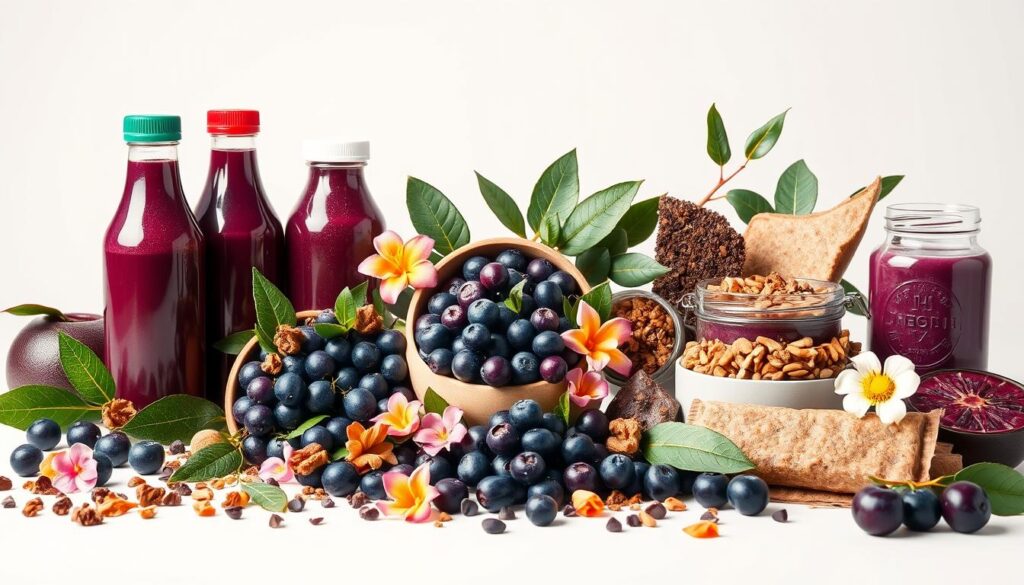
A strong product line strategy is key for your acai-based business. Study market trends and consumer preferences to identify gaps in current offerings. Create diverse products that meet different customer needs while maintaining a unified brand image.
Start with a core product like organic acai bowls. Then, add premium acai smoothies and frozen acai packs for home use. Finally, include acai-infused snacks or desserts to appeal to health-conscious consumers.
Use acai’s unique features to make your products stand out. Try creating acai-based skincare items. Team up with local bakeries to offer acai-infused pastries. These new ideas can set your brand apart in a busy market.
| Product Category | Examples | Target Audience |
|---|---|---|
| Fresh Preparations | Acai bowls, smoothies | Health-conscious millennials |
| Frozen Products | Acai sorbet, frozen packs | Busy professionals, families |
| Packaged Goods | Acai powder, energy bars | Fitness enthusiasts, athletes |
| Specialty Items | Acai-infused skincare, teas | Wellness-focused consumers |
Based on sales data, keep checking and changing your product line. Listen to what customers say about your products. This will help keep your offerings fresh and relevant in the ever-changing superfood market.
Developing Acai and Pitaya-Based Product Formulations
Crafting tasty acai and pitaya treats is a thrilling process. Your success depends on nailing recipes, flavors, and textures. Let’s dive into making irresistible goodies with top-notch pitaya and dragonfruit.
Recipe Development and Testing
First, brainstorm unique product ideas. Then, try different mixes of acai, pitaya, and other ingredients. Finally, test each recipe several times, making changes as you go.
Keep detailed notes on ingredients, amounts, and how you make things. This helps you track what works best.
Flavor Profile Optimization
Honey or agave balances the tartness of acai and dragonfruit. Vanilla, cinnamon, or coconut adds depth. For a tropical flair, try pairing it with mango or pineapple.
Do blind taste tests to fine-tune your flavors. This ensures your product tastes great to everyone.
Texture and Consistency Control
Get the right texture for each product. Smoothie bowls should be thick and spoonable. Frozen treats need to be creamy but firm.
Adjust ingredient amounts and blending times to achieve your desired texture. This may take some trial and error.
| Product Type | Key Ingredients | Texture Goal |
|---|---|---|
| Smoothie Bowl | Acai, banana, high quality pitaya | Thick, spoonable |
| Frozen Pops | Dragonfruit, coconut milk, agave | Creamy, firm |
| Energy Bars | Dried acai, nuts, dates | Chewy, compact |
Creating perfect acai and pitaya products takes time. Keep tweaking your recipes until you achieve the perfect flavor, texture, and appearance.
Packaging and Presentation Solutions
Captivate customers with striking packaging for your premium acai and pitaya products. Showcase vibrant superfoods while preserving their nutrients. Opt for sleek, eco-friendly containers that appeal to health-conscious buyers.
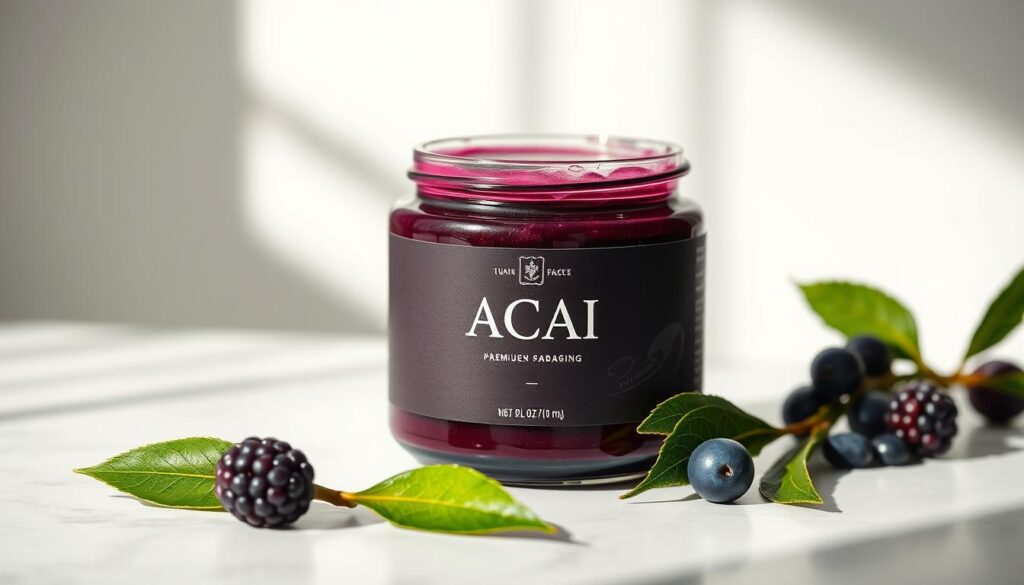
Use clear biodegradable cups to showcase the rich purple color for organic acai bowls. Add bamboo spoons to emphasize eco-friendliness. For frozen acai packs, choose resealable pouches to maintain freshness.
Presentation matters for ready-to-blend smoothie kits. Package acai puree with other fruits in divided containers. This looks appealing and offers convenience. For acai-based skincare products, use frosted glass jars.
Labels should feature bold, tropical fonts and eye-catching colors. They should highlight key benefits like “antioxidant-rich” or “sustainably sourced.” QR codes should link to recipes or sourcing information.
Your packaging is crucial for first impressions. Create a visual and tactile experience that mirrors the premium quality of your organic acai. Make it memorable and reflective of your brand’s commitment to excellence.
Establishing Food Safety Protocols
Food safety is vital when handling high-quality acai and premium pitaya. Your business must implement strict protocols to ensure product quality. These measures will safeguard customer health and build trust in your brand.
HACCP Implementation
HACCP is essential for food safety in acai and pitaya products. This system helps identify and control potential hazards in your production process. Critical control points may include freezing temperatures and handling procedures.
Quality Control Measures
Regular quality checks are crucial for acai and pitaya products. Test for purity, color, and taste while keeping detailed records. This approach maintains consistency and helps catch issues early.
Sanitation Standards
Clean equipment and work areas are essential for food safety. Create a thorough cleaning schedule for all surfaces and tools. Train your staff on proper hand washing and hygiene practices.
| Food Safety Area | Key Actions |
|---|---|
| HACCP | Identify hazards, establish control points |
| Quality Control | Regular testing, record keeping |
| Sanitation | Cleaning schedules, staff training |
Focusing on these areas will help create safe, high-quality acai and pitaya products. Your customers will trust your brand, leading to success in the superfood market.
Pricing Strategies for Profitability
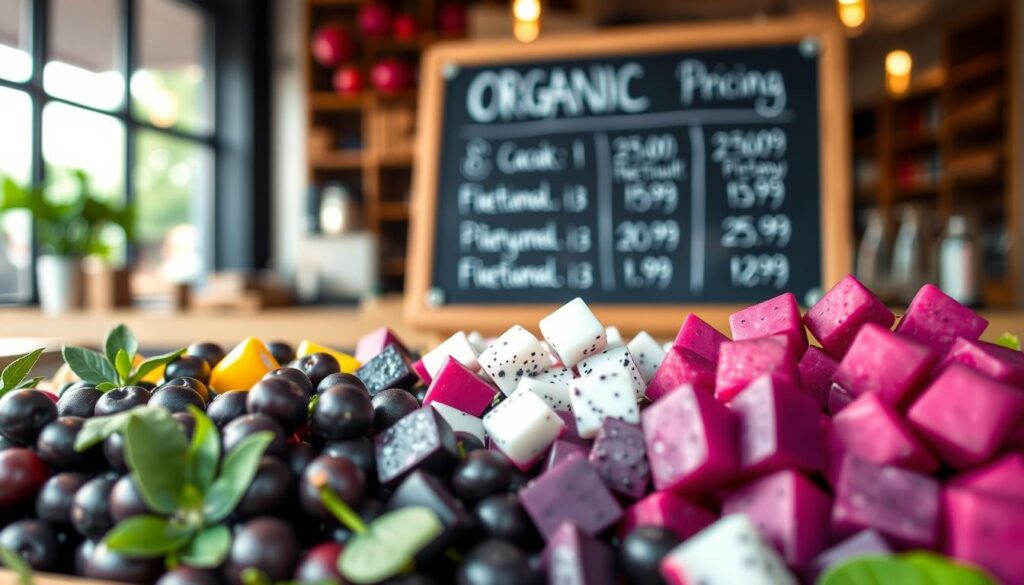
Pricing organic acai and pitaya products is key to business success. Balance profitability with market competitiveness. Calculate production costs, including ingredients, packaging, and labor.
Add a markup that reflects your premium offerings. This ensures you cover expenses and make a profit.
Consider these pricing models for your Tropical Acai products:
- Value-based pricing: Set prices based on the perceived value of organic acai and high-quality pitaya to health-conscious consumers.
- Premium pricing: Position your products as top-tier, justifying higher prices for superior quality and organic certification.
- Bundle pricing: Offer discounts on combinations of acai and pitaya products to encourage larger purchases.
Adjust prices seasonally. During peak demand, you can slightly increase prices: track competitors’ pricing and market trends.
This helps keep your prices competitive while maintaining healthy profit margins. Stay flexible and responsive to market changes.
| Product | Cost | Suggested Retail Price | Profit Margin |
|---|---|---|---|
| Organic Acai Bowl | $3.50 | $9.99 | 65% |
| High Quality Pitaya Smoothie | $2.75 | $7.99 | 66% |
| Acai-Pitaya Blend Pack | $5.00 | $14.99 | 67% |
Smart pricing strategies can boost your profits. They also ensure customers get value from premium organic products.
By balancing these factors, you can create a winning pricing strategy that benefits both your business and your customers.
Marketing Your Acai and Pitaya Products
Success in the superfood industry hinges on effective marketing. Your premium acai and dragonfruit products offer unique selling points. Let’s explore strategies to reach your audience and boost sales.
Digital Marketing Techniques
Promote your acai and pitaya offerings through online platforms. Create a user-friendly website showcasing your products’ health benefits and exotic appeal.
Use SEO to improve visibility for keywords like “premium acai” and “dragonfruit smoothie bowls”. Implement email campaigns to keep customers informed about new product launches.
Social Media Strategy
Social media is perfect for marketing visually appealing superfoods. Share vibrant images of acai bowls and dragonfruit smoothies on Instagram and Pinterest.
Create short, engaging videos with recipe ideas for TikTok and YouTube. Use Facebook to build a healthy living community centered around exotic flavors.
Influencer Partnerships
To expand your reach, team up with health and wellness influencers. Choose influencers who align with your brand values and have audiences interested in superfoods.
Send product samples and invite influencers to create content featuring your premium products. This authentic promotion can boost brand awareness and credibility.
| Marketing Channel | Key Strategy | Expected Outcome |
|---|---|---|
| Website | SEO optimization | Improved organic traffic |
| Visual content | Increased brand engagement | |
| Influencer Partnerships | Product sampling | Expanded audience reach |
Distribution Channels and Logistics
Efficient distribution channels are vital for delivering customers top-notch acai and pitaya products. Your business’s success depends on selecting the right distribution model. Choose wisely to meet your specific needs and goals.

E-commerce platforms offer direct sales with better control and higher profits. Retail partnerships expand reach but require careful inventory management. Wholesale distribution boosts volume sales, especially with established partners like Tropical Acai.
| Distribution Channel | Pros | Cons |
|---|---|---|
| Direct-to-Consumer | Higher margins, brand control | Limited reach, logistics challenges |
| Retail Partnerships | Wider reach, physical presence | Lower margins, less control |
| Wholesale Distribution | Volume sales, established networks | Lowest margins, brand dilution risk |
Teaming up with a leading distributor like Tropical Acai can simplify your supply chain. They excel at delivering high-quality acai and premium pitaya products, and this partnership can boost your growth in the superfood market.
Consider using multiple channels to maximize your reach. This approach helps you adapt to changing market conditions and customer preferences.
Building a Strong Brand Identity
A powerful brand identity is vital for your acai and pitaya business. It helps you stand out in the superfood market. Your brand can attract health-conscious consumers and showcase your commitment to quality products.
Visual Branding Elements
Your visual brand should reflect tropical superfoods. Choose vibrant colors that match acai berries and pitaya fruit. Design a simple, memorable logo that symbolizes health and vitality.
Use consistent typography and imagery in all your marketing materials. This creates a cohesive look for your brand.
Brand Story Development
Tell a compelling story about your organic acai and pitaya journey. Share your passion for providing nutritious superfoods and sustainable sourcing practices. This helps customers connect with your brand and understand its value.
Customer Experience Design
Create a smooth experience for customers at every touchpoint. This includes user-friendly packaging, clear product labels, and engaging social media content. Offer recipe ideas and nutritional information to help customers use your products.
Focus on customer satisfaction to build brand loyalty. This encourages repeat purchases and positive word-of-mouth.
- Develop eye-catching packaging that protects product quality
- Provide clear nutritional information and serving suggestions
- Engage with customers through social media and email newsletters
- Offer excellent customer service to address inquiries and feedback
Carefully craft these brand elements to create a strong identity. This will appeal to health-conscious consumers. It positions your acai and pitaya products as premium choices in the superfood market.
Legal Requirements and Certifications
Selling acai and pitaya products requires compliance with various regulations. Your business must meet essential requirements and obtain certifications. Let’s explore what you’ll need to operate legally.

Start by registering your business with local and state authorities. Then, get a food service license and business operating permit. Finally, ensure your labels meet FDA guidelines for food products.
Certifications can boost your credibility and open new markets. Consider these options for your acai and dragonfruit products:
- USDA Organic: Proves your ingredients are grown without synthetic pesticides or fertilizers
- Non-GMO Project Verified: Assures customers your products are free from genetically modified organisms
- Fair Trade: Demonstrates ethical sourcing practices for your premium acai and dragonfruit
- Kosher or Halal: Expands your market to specific religious communities
Implement an HACCP system to ensure food safety. This approach identifies and controls potential hazards in your production process.
| Certification | Benefits | Cost Range |
|---|---|---|
| USDA Organic | Higher perceived value, environmental credibility | $700 – $1,500 annually |
| Non-GMO Project Verified | Appeals to health-conscious consumers | $1,500 – $5,000 annually |
| Fair Trade | Supports ethical sourcing, attracts socially conscious buyers | 0.8% – 2% of sales |
| Kosher | Expanding the market to Jewish consumers | $2,000 – $5,000 annually |
Keep up with changing regulations and renew certifications as needed. Consider partnering with legal experts in food industry compliance.
Financial Planning and Management
Smart financial planning is crucial for success in the acai and pitaya business. Focus on cost analysis, revenue projections, and investment needs. This approach will build a strong foundation for your venture.
Cost Analysis
Understanding expenses is vital when working with high-quality acai and premium pitaya. Key cost categories include raw materials, production equipment, packaging, labor, and marketing.
- Raw materials
- Production equipment
- Packaging
- Labor
- Marketing
Revenue Projections
Estimate earnings by studying market trends and pricing strategies. Consider seasonal demand changes for acai and pitaya products. This will help you create realistic projections for your business.
Investment Requirements
Calculate the capital needed to start and maintain your business. This may include equipment, inventory, marketing, and operating expenses.
| Investment Type | Estimated Cost |
|---|---|
| Initial equipment | $50,000 – $100,000 |
| Inventory (high-quality acai, premium pitaya) | $20,000 – $40,000 |
| Marketing and branding | $10,000 – $30,000 |
| Operating expenses (6 months) | $30,000 – $60,000 |
Careful financial planning prepares you for the competitive acai and pitaya market. It boosts your chances of long-term success. Stay focused on your goals and adjust strategies as needed.
Customer Service Excellence
Master customer service to elevate your acai and pitaya business. Top-notch support creates loyal fans and boosts your brand’s reputation. Your organic products deserve nothing less.
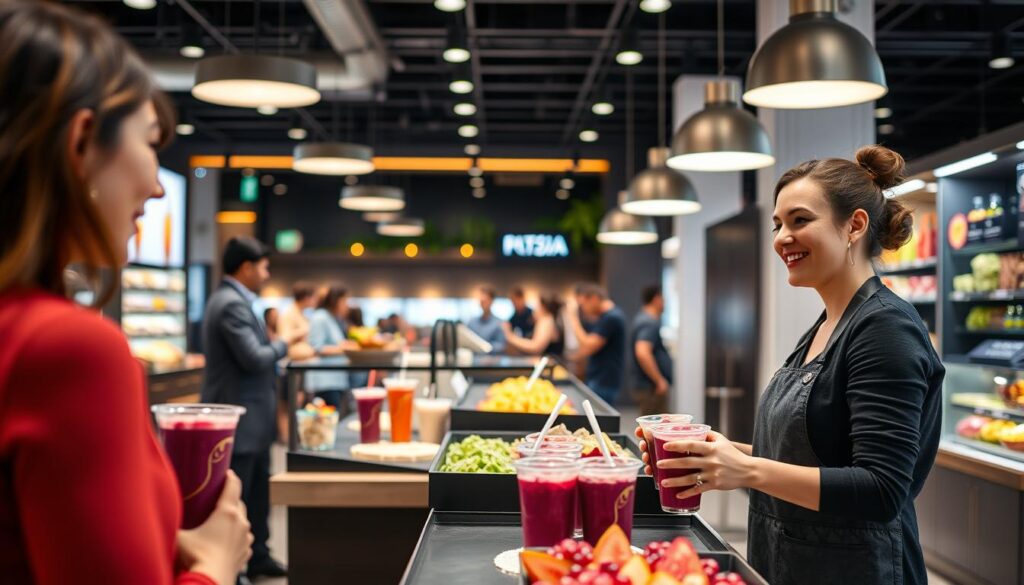
Train your team to handle inquiries with expertise and enthusiasm. Educate them on the benefits of organic acai and pitaya for confident customer interactions. Create a knowledge base for consistent and accurate responses.
Personalize customer interactions by remembering preferences and purchase history. Based on past orders, offer tailored recommendations and suggest new ways to enjoy your organic products.
“Great customer service is the foundation of a successful acai and pitaya business. It turns first-time buyers into lifelong fans.”
Implement a streamlined process for handling issues and returns. Respond promptly to complaints with solutions that exceed expectations. Consider offering a satisfaction guarantee to build trust.
- Provide clear product usage instructions.
- Offer recipe ideas featuring organic acai and high-quality pitaya
- Create a loyalty program to reward repeat customers
- Gather and act on customer feedback to improve your products and service
Prioritize customer service excellence to create positive buzz around your organic offerings. This approach leads to increased sales and a thriving business. Your efforts will pay off in customer loyalty.
Scaling Your Business Operations
Growing your acai and pitaya product business requires strategic scaling. Tropical Acai, a bulk supplier of premium acai and dragonfruit, can support your expansion. Let’s explore key strategies for business growth.
Expansion Strategies
Diversify your product line to scale effectively. To attract customers, introduce new premium acai blends or dragonfruit-infused items. Partner with health food stores, gyms, and cafes to expand your distribution network.
Production Capacity Planning
Invest in equipment upgrades to prepare for growth. Streamline your production process to handle larger volumes of acai and dragonfruit products. Use inventory management systems to maintain optimal stock levels and reduce waste.
Market Penetration Tactics
Create targeted marketing campaigns to reach new customer segments. In your messaging, emphasize the health benefits of premium acai and dragonfruit. Offer promotions or loyalty programs to encourage repeat purchases and referrals.
These scaling strategies will help you meet growing demand and establish your brand as a leader in the acai and pitaya markets. Partnering with Tropical Acai ensures a consistent supply of high-quality ingredients for your expanding business.
Conclusion
Tropical Acai’s high-quality acai and premium pitaya provide a solid foundation for success. This guide offers strategies to help you stand out in the superfood market. You’re now ready to begin your acai and pitaya product journey.
Top-notch ingredients and creative products mark the start of your success. Understanding customer preferences will help you create appealing offerings. Quality is crucial in every step, from sourcing to packaging.
Keep innovating and adapting to market trends as you progress. Tropical Acai provides access to the finest acai and pitaya. This advantage allows you to craft unique, delicious products that customers will love.
Your acai and pitaya business has unlimited potential. Stay committed to excellence, and you’ll reap the rewards. The superfood market eagerly awaits your fresh ideas and premium products.
Go ahead and make your mark! Your dedication and quality products will set you apart in this growing industry.
FAQ
What are the current market trends for acai and pitaya products?
Acai and pitaya products are booming due to growing interest in superfoods. These exotic fruits offer nutritional benefits that health-conscious consumers crave. The trend aligns with the increasing demand for healthier food options.
How can I ensure I source high-quality acai and pitaya for my products?
Partner with reputable suppliers like Tropical Acai for premium acai and pitaya. Seek organic options and suppliers with strict quality control measures. Proper storage and handling are vital to maintaining the superfruits’ integrity.
What essential equipment do I need to create acai and pitaya-based products?
Key equipment includes high-powered blenders, freezers, and packaging machinery. Your specific needs may vary based on your product line. Investing in quality equipment is crucial for creating exceptional products.
How can I develop unique acai and pitaya product formulations?
Focus on recipe testing and flavor profile optimization. Experiment with different combinations of acai, pitaya, and complementary ingredients. Pay attention to texture and consistency control.
Leverage the natural qualities of organic acai and dragonfruit to create innovative products. This approach will help your offerings stand out in the market.
What packaging solutions work best for acai and pitaya products?
Choose packaging that’s both attractive and functional. Consider sustainable options that appeal to health-conscious consumers. Your packaging should showcase the product’s premium quality and protect its integrity.
Use eye-catching designs that highlight the vibrant colors of acai and pitaya. This will help your products stand out on shelves.
How can I ensure food safety in my acai and pitaya product production?
Implement robust food safety protocols, including HACCP systems and quality control measures. Maintain strict sanitation standards and provide regular staff training. Work with suppliers who prioritize quality and safety, such as Tropical Acai.
What marketing strategies are most effective for acai and pitaya products?
Use digital marketing techniques, social media engagement, and influencer partnerships. Educate consumers about the health benefits of acai and pitaya. Showcase the premium quality and organic nature of your ingredients.
Leverage visual content to highlight your products’ vibrant colors and appealing presentation.
How can I scale my acai and pitaya product business effectively?
Focus on expansion strategies, production capacity planning, and market penetration tactics. Partner with reliable suppliers like Tropical Acai for a consistent, high-quality ingredient supply. Continuously innovate your product line and stay attuned to market trends.
